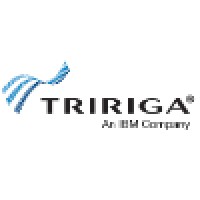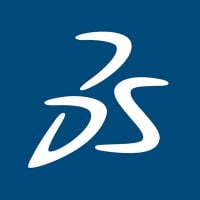Company Cyber Security Posture
NANA
NA Company Details
NA
NA
NA
NA
NA
NA
Scan still pending
NA
NA
Between 200 and 800
This score is AI-generated and less favored by cyber insurers, who prefer the TPRM score.
 NA Global Score
NA Global Score.png)

Company Scoring based on AI Models
| Model Name | Date | Description | Current Score Difference | Score |
|---|---|---|---|---|
| AVERAGE-Industry | 03-12-2025 | This score represents the average cybersecurity rating of companies already scanned within the same industry. It provides a benchmark to compare an individual company's security posture against its industry peers. | N/A | Between 200 and 800 |
Company Cyber Security News & History
| Entity | Type | Severity | Impact | Seen | Url ID | Details | View |
|---|
Company Subsidiaries

NA
Access Data Using Our API

Get company history
.png)
NA Cyber Security News
China fines Didi $1.2 billion for violating cybersecurity and data laws
Authorities accused Didi of breaking privacy laws and posing cybersecurity risks. Their actions were also widely seen as punishment for the ...
Didi Cybersecurity Review - Which Laws did Didi Break?
The Didi cybersecurity review culminated in a US$1.2 billion fine. What laws did Didi break, and what can we learn from the case?
China investigates Didi over cybersecurity days after its huge IPO
Didi Global's (DIDI.N) shares fell more than 10% in New York on Friday after China's cyberspace agency said it had launched an investigation ...
The CAC is Coming: Didi Chuxing Fined a Record-breaking USD 1.2 Billion for Breach of Data Protection Regulations
This is the maximum possible fine that can be issued to individuals under the PIPL. This broad brush penalisation of Didi's top brass sends a ...
China Initiates Cybersecurity Review of Didi ChuXing and Three Other Chinese Mobile Applications
According to Article 35 of the CSL, operators of Critical Information Infrastructure (“CII Operators”) are required to undergo a security review ...
China Launches Cybersecurity Review Against Micron
This client alert summarizes the Cyberspace Administration of China's recently-announced cybersecurity review of Micron's products sold in ...
China Sends State Security, Police Officials to Didi for Cybersecurity Probe
The stationing of regulators at the ride-hailing firm is the latest development in saga that has gripped the country's tech industry.
China cybersecurity agency fines ride-hailing giant Didi $1.2 billion for data issues
The Cyberspace Administration of China said it concluded a network security review of the company and found “illegal activities” and violations ...
Why are so many Chinese agencies reviewing ride-hailing giant Didi?
After having its apps removed from app stores and being sued by shareholders in the US, Didi's cybersecurity review is finally getting under ...

NA Similar Companies

Microsoft Mechanics
Apply the newest engineering from Microsoft to the work you do every day. Mechanics is Microsoft's official video series for IT Pros, Solution Architects, Developers, and Tech Enthusiasts. Watch as Microsoft engineers show you how to get the most from the software, service, and hardware they built

Cisco
Cisco is the worldwide technology leader that is revolutionizing the way organizations connect and protect in the AI era. For more than 40 years, Cisco has securely connected the world. With its industry leading AI-powered solutions and services, Cisco enables its customers, partners and communities

Shopify
Shopify is a leading global commerce company, providing trusted tools to start, grow, market, and manage a retail business of any size. Shopify makes commerce better for everyone with a platform and services that are engineered for reliability, while delivering a better shopping experience for consu

TRIRIGA
Named by foremost analyst firm AMR Research as the leader in sustainability software and top industry analysts as a leader in Integrated Workplace Management Systems, TRIRIGA, an IBM Company provides enterprise sustainability, real estate and facilities management solutions. TRIRIGA delivers the ind

Dassault Systèmes
Dassault Systèmes, the 3DEXPERIENCE Company, is a catalyst for human progress. We provide business and people with collaborative virtual environments to imagine sustainable innovations. By creating virtual twin experiences of the real world with our 3DEXPERIENCE platform and applications, our custom

Cadence
Cadence is a pivotal leader in electronics and system design, building upon more than 30 years of computational software expertise. The company applies its underlying Intelligent System Design strategy to deliver software, hardware and IP that turn design concepts into reality. Cadence customers are

Frequently Asked Questions
Explore insights on cybersecurity incidents, risk posture, and Rankiteo's assessments.
NA CyberSecurity History Information
How many cyber incidents has NA faced?
Total Incidents: According to Rankiteo, NA has faced 0 incidents in the past.
What types of cybersecurity incidents have occurred at NA?
Incident Types: The types of cybersecurity incidents that have occurred include .
Additional Questions
What Do We Measure?
















Every week, Rankiteo analyzes billions of signals to give organizations a sharper, faster view of emerging risks. With deeper, more actionable intelligence at their fingertips, security teams can outpace threat actors, respond instantly to Zero-Day attacks, and dramatically shrink their risk exposure window.
These are some of the factors we use to calculate the overall score:
Identify exposed access points, detect misconfigured SSL certificates, and uncover vulnerabilities across the network infrastructure.
Gain visibility into the software components used within an organization to detect vulnerabilities, manage risk, and ensure supply chain security.
Monitor and manage all IT assets and their configurations to ensure accurate, real-time visibility across the company's technology environment.
Leverage real-time insights on active threats, malware campaigns, and emerging vulnerabilities to proactively defend against evolving cyberattacks.




